Camera Obscura & Pinhole photography
Camera Obscura was a very smart and useful technique used especially for artists, and was a method used since early 500BC to create complex real life structures mainly at the time but anything else they could do with the technique. This was a way in which they would place themselves in a completely pitch black room, and cut a small or even large (possibly) hole in a wall in which the building or what ever they wanted to capture would be facing, and after a while depending on the light intensity, it would reflect the image onto the wall from the light rays upside down, as if it was a natural projector.
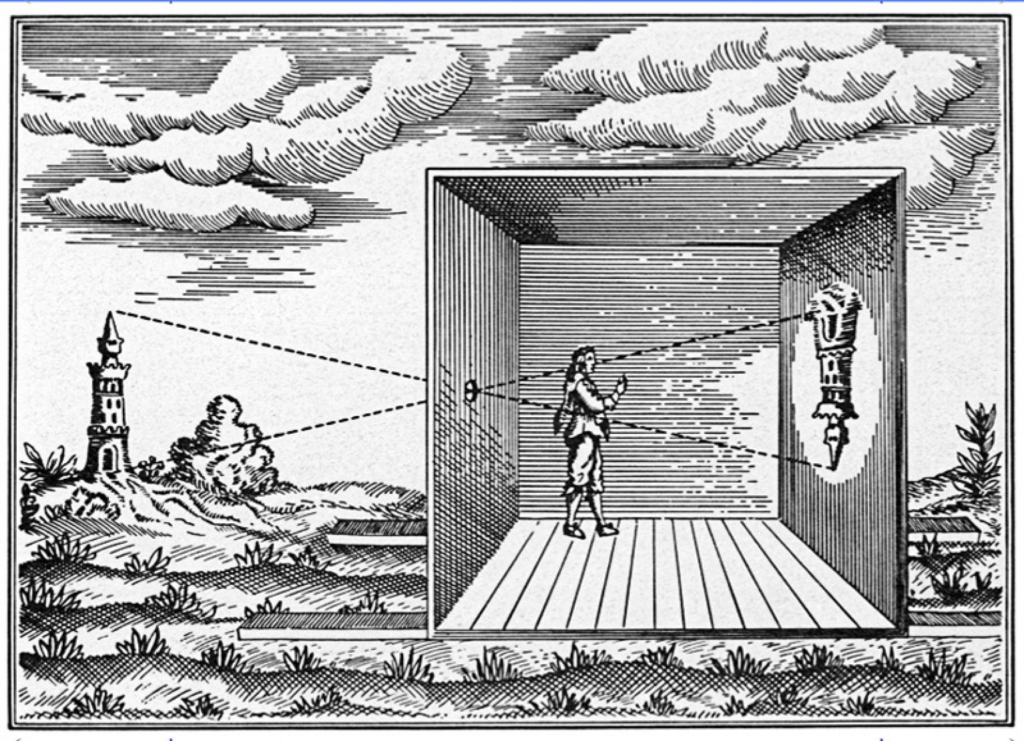
although the method was not commonly used during this era, not until the 19th century where it would start to fully start to transform into photography. This leads onto the pinhole photography used near 1856, talked about in a book, this affectively used the same method of camera obscura, but almost built into a camera.
(https://en.wikipedia.org/wiki/Camera_obscura AND https://en.wikipedia.org/wiki/Pinhole_camera)
Nicephore Niepce & Heliography
Nicephore was a key person in the invention of photography, where he would later use similar methods of camera obscura to create a working machine which could create images. His idea was to use camera obscura and light to create a printed image onto a sheet of paper. This look him a long time and even for him to quite but to come back a year later. The first accomplishment he had made was in 1822, where he had successfully printed an image of Pope Pius VII on glass. However the first proper image ever taken of a landscape was in 1824 which required a very long exposure time. Using polished silver as a base and letting iodine vapours react with the bitumen image, he obtained genuine photographs in black and white on a metal plate. The preciseness of these images was amazing for the time although it was taken over days.

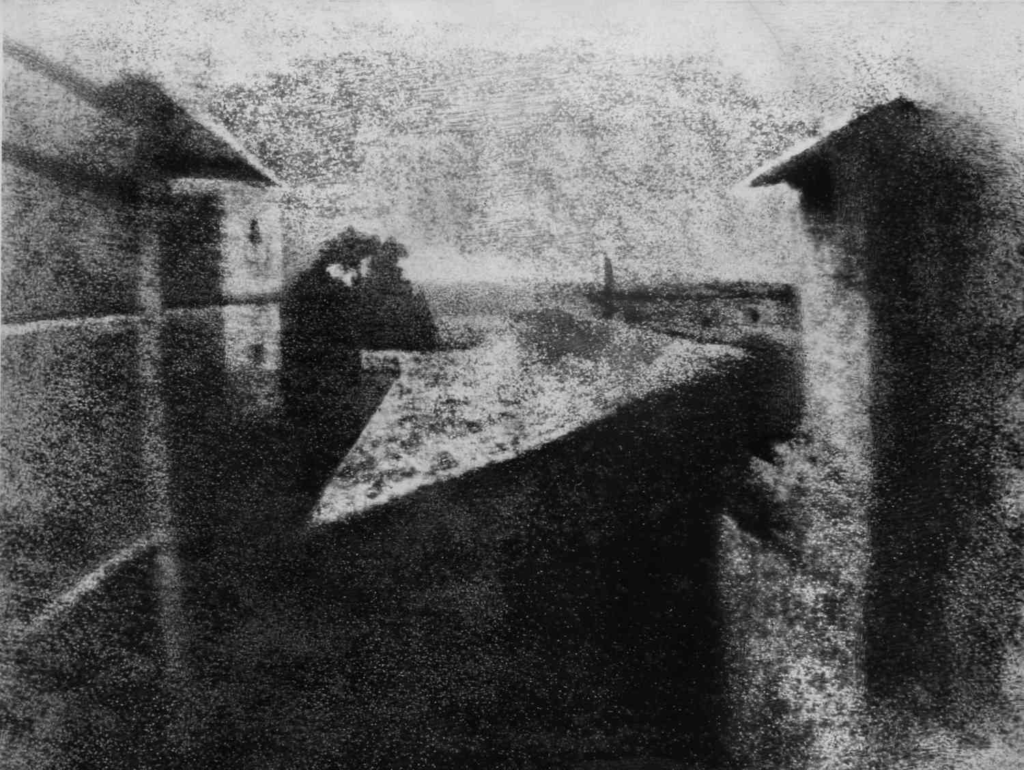
Heliography was the similar process which he had used by dissolving light sensitivity on glass or metal which would create a rough image, and was tested by Nicephore a lot.
(https://artsandculture.google.com/)
Louis Daguerre & Daguerreotype
Louis was a French photographer recognized for his invention of the “eponymous daguerreotype process” of photography. His method was linked closely and carried of through different methods from Nicephors methods where he would exposed a thin silver-plated copper sheet to the vapour given off by iodine crystals producing a coating of light-sensitive silver iodine on the surface. which would initially after a long exposure time create a distinct image, but Louis discovered that with more chemical reactions on-top of that distinct image it could be formed into a full clear one. This daguerreotype process was mainly used for portraits during the 1840’s, and very rarely landscapes, almost no landscapes. This was because they had to have very long exposure times reaching up to 10mins with lightly lit areas in order to create a full image. Millions of these daguerreotypes where produced over the years.

With the invention of the daguerreotype became the first image made.
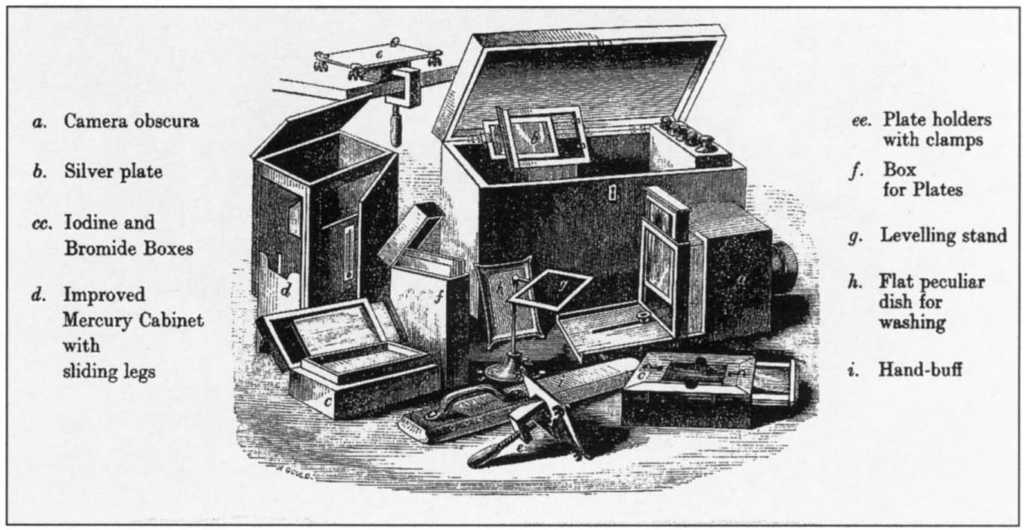
Henry Fox Talbot & Calotype
Henry fox was an English scientist, inventor, and photographic pioneer who had created the salt paper and Calotype. Talbot was very famously known for his creation of light-fast permanent photographs, which was available to the public, although not being the first person to do this his Calotype was different to the daguerreotype because it was the first invention of negative-to-positive process, introduced in 1841. Not only that but it wasn’t on glass or any type of metal in this case it was used on paper which was soaked in chemicals.
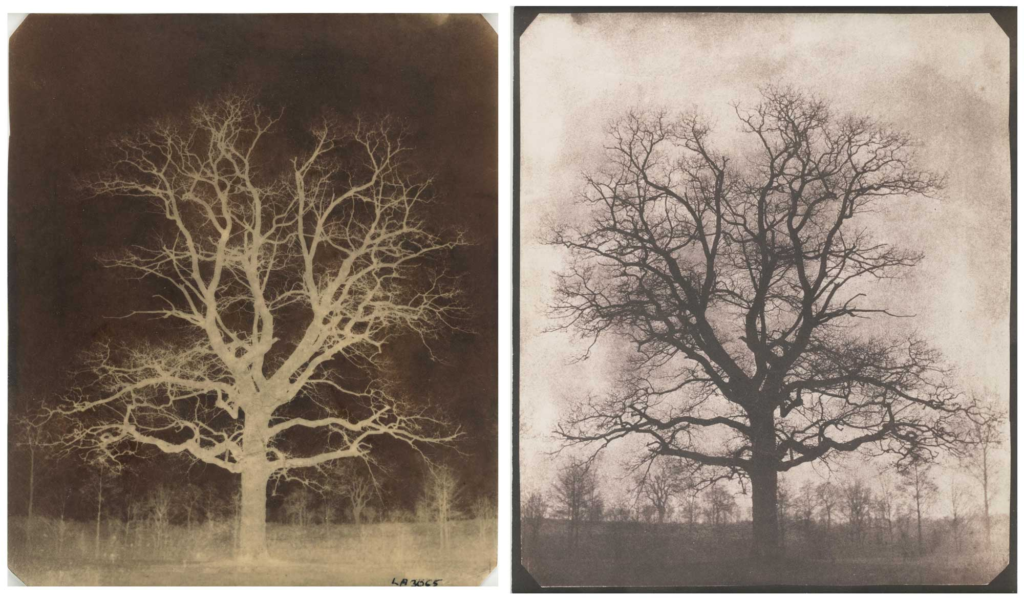
his images where much nicer to look and and gave almost a reverse image of something, giving it a different feel and a softer look.
(https://en.wikipedia.org/wiki/Henry_Fox_Talbot AND https://en.wikipedia.org/wiki/Calotype)
Robert Cornelius & self-portraiture
It was during the 18th century where the invention and ideas of photography spiked, and the advanced ability to capture a moment or even use methods to create photography. For example the first person to ever create a self-portrait was Robert Cornelius in 1839:

He worked in photography studios, creating lamps, and even worked to reduce the exposure time of an image, but also created the plates for the images to be placed on. Robert Cornelius was invested in the daguerreotype and aimed for it to advance and become greater.
Cornelius was only noted to be some what famous until 1876 when he was interviewed for the history of photography to be noted down correctly, and Cornelius had claimed to be taking portraits during 1839 but had no evidence to back up the claim until the famous first portrait was discovered and was dated to be 1839. Cornelius was a very important figure for the advancements of portraits because of his ideas of using reflectors and different coloured stained glass to allow stronger light to his the daguerreotype, which meant people only had to stay still for a maximum of 1 minute to create a full image.
(https://en.wikipedia.org/wiki/Robert_Cornelius AND https://blogs.loc.gov/loc/2022/07/robert-cornelius-and-the-first-selfie/)
Julia Margaret Cameron & Pictorialism
Julia was a British photographer, who was considered one of the most important portraitists of the 19th century. she had been introduced to photography late into her life, with her being 48 years old, and was given a camera by her own daughter. With this she captured portraits of the Victorians, showing the innocents, beauty and genius of men and women. She was important to photography because of her ability to create a scene in her images. for example she would find people walking around and talk to them into consenting into a photo shoot. She would present these people into historical or literal, or even biblical scenes in her images. These images created a sensitive, and moving feel.

This is Sir John Herschel, who was a renowned scientist, and mathematician, but to Julia was a teacher and a high priest. She asked him to wash his hair and to making it messier, and covered him in black clothing to create an affect of him appearing out of the darkness. He stared straight into the camera and it created an image of innocents and personality.

Julia’s ability to perform different tones and angles of lighting created perfect settings for images and to capture a scene that Julia wanted to portray.
(https://en.wikipedia.org/wiki/Julia_Margaret_Cameron)
Henry Mullins & Carte-de-Visit
Henry Mullins was a professional photographer who was patronised by Queen Victoria, and he had set up a business in 1848 for photography at 7 royal square. He was a well known and as you would guess a wealthy photographer, who would take pictures for many influential people in jersey, where they would have up to 16 photographs taken in one sitting, which during this period was a lot of money and time. He was so famous and well known he had grown close to the royal family taking images of Queen Victoria, taking many images of/for her and the royal family.
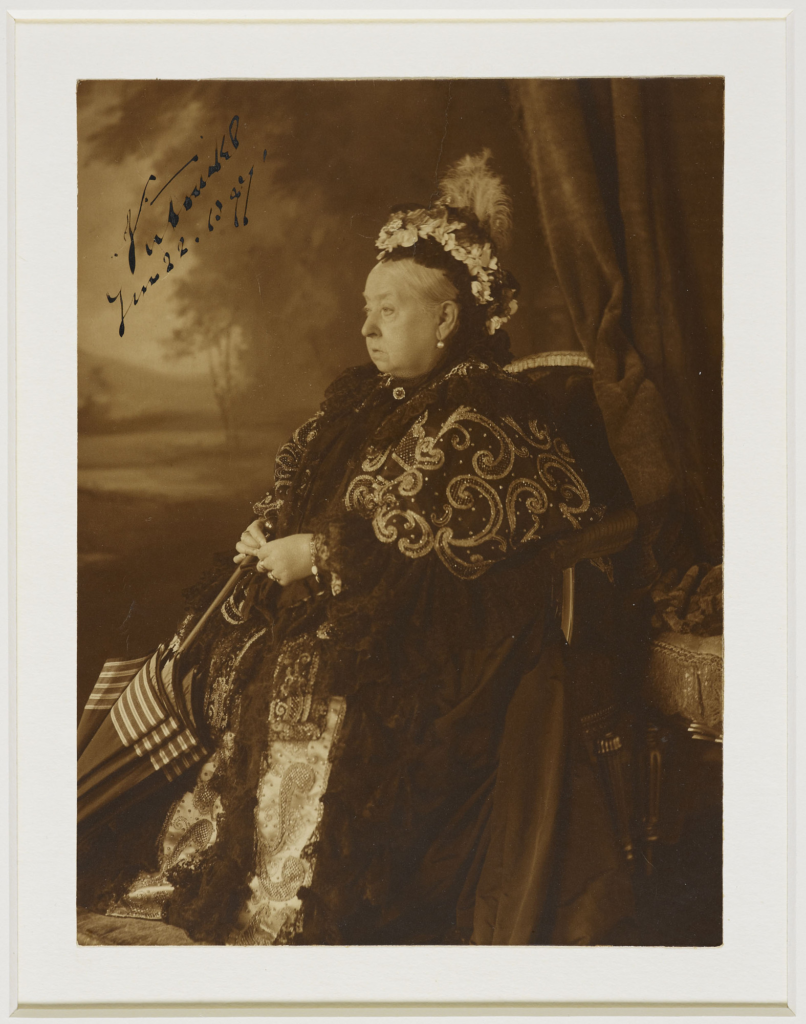

Mullins made a good name for himself and for his business especially for his cheap and public photographs which he had advertised to the public, growing his business, and him creating up to 9600 images, and possibly even more.
(https://en.wikipedia.org/wiki/Gustav_Mullins#:~:text=Gustav%20William%20Henry%20Mullins%20(1854,photographer%2C%20patronised%20by%20Queen%20Victoria AND https://www.theislandwiki.org/index.php/Henry_Mullins)

An interesting and well structured article…well done!
Add a bibliography
Add links and clips